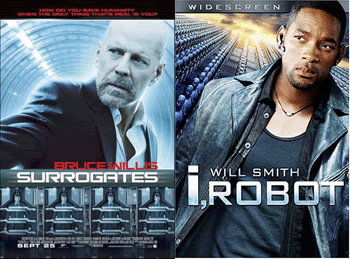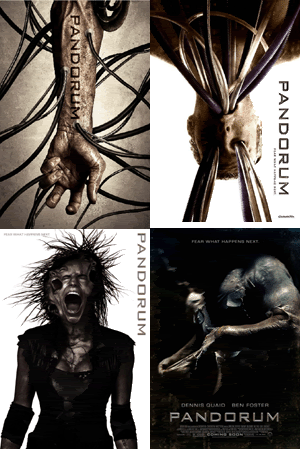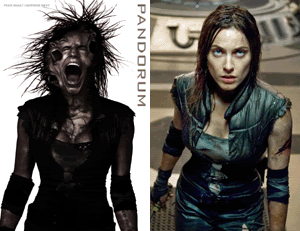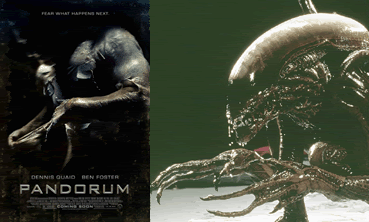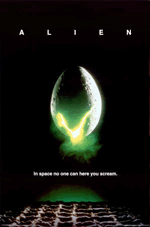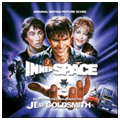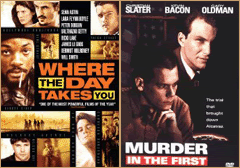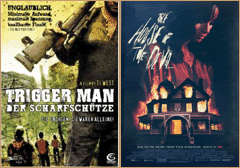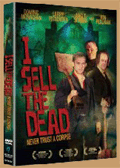Yes, I’m late on this tally, but it’s been a busy week. On January 21st, nominees for Britain’s equivalent of the Oscar Awards – the BAFTAs – were announced, and as per the custom, I’ve hyperlinked titles I’ve reviewed, as well as those available on DVD or soon to be available on DVD, including those in Region 2 land, where noted.
Soundtracks have also been linked to that invaluable resource for fans and the curious, Soundtrackcollector.com, as well as Amazon.com when necessary.
Among the nominated composers is Chaz Jankel, who had a seemingly fleeting career with film with Making Mr. Right, D.O.A. (with its exquisite death lament), and the North American release of K2 in 1991. (Hans Zimmer’s original score was retained for the European edit.) K2 was Jankel’s last credit, making Sex & Drugs & Rock & Roll his first film score in 18 years. Welcome back!
The full list of nominees is also available at the BAFTA’s website, along with other multimedia materials. The awards ceremony at The Royal Opera House will be broadcast by the BBC on Sunday February 21st, 2010.
In case James Cameron wins an award and starts to blather in Avatarese, may I suggest the use of ripe tomatoes. I understand the pinched form of the Costoluto Genovese variety ensures both accuracy and a spectacular bounce when the curved edge bumps into a big egotistical head.
- MRH
2009 BAFTA AWARD NOMINATIONS

BEST FILM
AVATAR James Cameron, Jon Landau
AN EDUCATION Finola Dwyer, Amanda Posey --- to be released as a Region 2 DVD March 8, 2010
THE HURT LOCKER Nominees TBC
PRECIOUS: BASED ON THE NOVEL PUSH BY SAPPHIRE Lee Daniels, Sarah Siegel-Magness, Gary Magness --- to be released on DVD March 9, 2010
UP IN THE AIR Ivan Reitman, Jason Reitman, Daniel Dubiecki
OUTSTANDING BRITISH FILM
AN EDUCATION Finola Dwyer, Amanda Posey, Lone Scherfig, Nick Hornby --- to be released as a Region 2 DVD March 8, 2010
FISH TANK Kees Kasander, Nick Laws, Andrea Arnold --- to be released as a Region 2 DVD January 25, 2010
IN THE LOOP Kevin Loader, Adam Tandy, Armando Iannucci, Jesse Armstrong, Simon Blackwell, Tony Roche
MOON Stuart Fenegan, Trudie Styler, Duncan Jones, Nathan Parker
NOWHERE BOY Robert Bernstein, Douglas Rae, Kevin Loader, Sam Taylor-Wood, Matt Greenhalgh
OUTSTANDING DEBUT BY A BRITISH WRITER, DIRECTOR OR PRODUCER
LUCY BAILEY, ANDREW THOMPSON, ELIZABETH MORGAN HEMLOCK, DAVID PEARSON Directors, Producers –
Mugabe and the White African
ERAN CREEVY Writer/Director – Shifty --- Region 2 release only
STUART HAZELDINE Writer/Director – Exam
DUNCAN JONES Director – Moon
SAM TAYLOR-WOOD Director – Nowhere Boy
DIRECTOR
AVATAR James Cameron
DISTRICT 9 Neill Blomkamp
AN EDUCATION Lone Scherfig --- to be released as a Region 2 DVD March 8, 2010
THE HURT LOCKER Kathryn Bigelow
INGLOURIOUS BASTERDS Quentin Tarantino
ORIGINAL SCREENPLAY
THE HANGOVER Jon Lucas, Scott Moore
THE HURT LOCKER Mark Boal
INGLOURIOUS BASTERDS Quentin Tarantino
A SERIOUS MAN Joel Coen, Ethan Coen --- to be released February 9, 2010
UP Bob Peterson, Pete Docter
ADAPTED SCREENPLAY
DISTRICT 9 Neill Blomkamp, Terri Tatchell
AN EDUCATION Nick Hornby --- to be released as a Region 2 DVD March 8, 2010
IN THE LOOP Jesse Armstrong, Simon Blackwell, Armando Iannucci, Tony Roche
PRECIOUS: BASED ON THE NOVEL PUSH BY SAPPHIRE Geoffrey Fletcher --- to be released on DVD March 9, 2010
UP IN THE AIR Jason Reitman, Sheldon Turner
FILM NOT IN THE ENGLISH LANGUAGE
BROKEN EMBRACES Agustín Almodóvar, Pedro Almodóvar --- to be released as a Region 2 DVD February 1, 2010
COCO BEFORE CHANEL Carole Scotta, Caroline Benjo, Philippe Carcassonne, Anne Fontaine --- to be released February 16, 2010
LET THE RIGHT ONE IN Carl Molinder, John Nordling, Tomas Alfredson
A PROPHET Pascal Caucheteux, Marco Cherqui, Alix Raynaud, Jacques Audiard
THE WHITE RIBBON Stefan Arndt, Veit Heiduschka, Margaret Menegoz, Michael Haneke --- to be released as a Region 2 DVD March 8, 2010
ANIMATED FILM
CORALINE Henry Selick
FANTASTIC MR FOX Wes Anderson --- to be released March 23, 2010
UP Pete Docter
LEADING ACTOR
JEFF BRIDGES Crazy Heart
GEORGE CLOONEY Up in the Air
COLIN FIRTH A Single Man
JEREMY RENNER The Hurt Locker
ANDY SERKIS Sex & Drugs & Rock & Roll
LEADING ACTRESS
CAREY MULLIGAN An Education --- to be released as a Region 2 DVD March 8, 2010
SAOIRSE RONAN The Lovely Bones
GABOUREY SIDIBE Precious: Based on the Novel Push by Sapphire --- to be released on DVD March 9, 2010
MERYL STREEP Julie & Julia
AUDREY TAUTOU Coco Before Chanel --- to be released February 16, 2010
SUPPORTING ACTOR
ALEC BALDWIN It’s Complicated
CHRISTIAN McKAY Me and Orson Welles
ALFRED MOLINA An Education --- to be released as a Region 2 DVD March 8, 2010
STANLEY TUCCI The Lovely Bones
CHRISTOPH WALTZ Inglourious Basterds
SUPPORTING ACTRESS
ANNE-MARIE DUFF Nowhere Boy
VERA FARMIGA Up in the Air
ANNA KENDRICK Up in the Air
MO’NIQUE Precious: Based on the Novel Push by Sapphire --- to be released on DVD March 9, 2010
KRISTIN SCOTT THOMAS Nowhere Boy
MUSIC
AVATAR James Horner
CRAZY HEART T-Bone Burnett, Stephen Bruton
FANTASTIC MR FOX Alexandre Desplat
SEX & DRUGS & ROCK & ROLL Chaz Jankel
UP Michael Giacchino
CINEMATOGRAPHY
AVATAR Mauro Fiore
DISTRICT 9 Trent Opaloch
THE HURT LOCKER Barry Ackroyd
INGLOURIOUS BASTERDS Robert Richardson
THE ROAD Javier Aguirresarobe
EDITING
AVATAR Stephen Rivkin, John Refoua, James Cameron
DISTRICT 9 Julian Clarke
THE HURT LOCKER Bob Murawski, Chris Innis
INGLOURIOUS BASTERDS Sally Menke
UP IN THE AIR Dana E. Glauberman
PRODUCTION DESIGN
AVATAR Rick Carter, Robert Stromberg, Kim Sinclair
DISTRICT 9 Philip Ivey, Guy Potgieter
HARRY POTTER AND THE HALF-BLOOD PRINCE Stuart Craig, Stephenie McMillan
THE IMAGINARIUM OF DOCTOR PARNASSUS Nominees TBC
INGLOURIOUS BASTERDS David Wasco, Sandy Reynolds Wasco
COSTUME DESIGN
BRIGHT STAR Janet Patterson
COCO BEFORE CHANEL Catherine Leterrier --- to be released February 16, 2010
AN EDUCATION Odile Dicks-Mireaux --- to be released as a Region 2 DVD March 8, 2010
A SINGLE MAN Arianne Phillips
THE YOUNG VICTORIA Sandy Powell
SOUND
AVATAR Christopher Boyes, Gary Summers, Andy Nelson, Tony Johnson, Addison Teague
DISTRICT 9 Brent Burge, Chris Ward, Dave Whitehead, Michael Hedges, Ken Saville
THE HURT LOCKER Ray Beckett, Paul N. J. Ottosson
STAR TREK Peter J. Devlin, Andy Nelson, Anna Behlmer, Mark Stoeckinger, Ben Burtt
UP Tom Myers, Michael Silvers, Michael Semanick
SPECIAL VISUAL EFFECTS
AVATAR Joe Letteri, Stephen Rosenbaum, Richard Baneham, Andrew R. Jones
DISTRICT 9 Dan Kaufman, Peter Muyzers, Robert Habros, Matt Aitken
HARRY POTTER AND THE HALF-BLOOD PRINCE John Richardson, Tim Burke, Tim Alexander, Nicolas Aithadi
THE HURT LOCKER Richard Stutsman
STAR TREK Roger Guyett, Russell Earl, Paul Kavanagh, Burt Dalton
MAKE UP & HAIR
COCO BEFORE CHANEL Thi Thanh Tu Nguyen, Jane Milon --- to be released February 16, 2010
AN EDUCATION Lizzie Yianni Georgiou --- to be released as a Region 2 DVD March 8, 2010
THE IMAGINARIUM OF DOCTOR PARNASSUS Sarah Monzani --- to be released as a Region 2 DVD March 29, 2010
NINE Peter ‘Swords’ King
THE YOUNG VICTORIA Jenny Shircore --- available as a Region 2 DVD only
SHORT ANIMATION
THE GRUFFALO Michael Rose, Martin Pope, Jakob Schuh, Max Lang --- to be released as a Region 2 DVD March 22, 2010
THE HAPPY DUCKLING Gili Dolev
MOTHER OF MANY Sally Arthur, Emma Lazenby
SHORT FILM
14 Asitha Ameresekere
I DO AIR James Bolton, Martina Amati
JADE Samm Haillay, Daniel Elliott
MIXTAPE Luti Fagbenle, Luke Snellin
OFF SEASON Jacob Jaffke, Jonathan van Tulleken
THE ORANGE RISING STAR AWARD (voted for by the public)
JESSE EISENBERG
NICHOLAS HOULT
CAREY MULLIGAN
TAHAR RAHIM
KRISTEN STEWART
--30--



